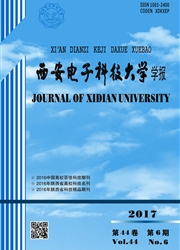

 中文摘要:
中文摘要:
合成孔径雷达(SAR)回波仿真是研究SAR信号处理的基础,其中运算量大是常用回波仿真方法的主要缺点.利用Stolt变换可以模拟SAR距离徙动空变性的思想,IωKA在二维频率域实现了扩展场景回波信号的快速仿真,显著降低了计算量和运算时间.分析表明,该方法的关键是Stolt变换时的插值操作,与ωKA成像算法中信号插值不同的是,IωKA插值前的信号是严格意义上的带限信号,进而影响到插值算法选择和插值性能.本文通过对待插值信号的预处理,将其转化为严格意义上的基带带限信号,提高了插值性能,降低了插值操作的复杂性,增强了适用范围.实验表明,如果将仿真中引入的误差看做噪声,该仿真误差远小于系统噪声.而且,与其他二维频域方法相比,实现了较高的相位和幅度保真度,且适用于正侧视、小斜视、大斜视和宽波束等各种模式.
 英文摘要:
英文摘要:
The echo signal simulation of Synthetic Aperture Radar (SAR) is the basis of the research on SAR signal processing, and the large computation cost is the primary shortcomings of the frequently-used echo signal simulation method. Using the theory that Stolt transformation can simulate the so-called spacevarying property of range migration, the IωK A algorithm becomes an impressive fast echo signal simulation method for the extended scenes in the two-dimensional frequency domain, and the computational cost and operation time is cut down sharply. According to the analysis, the key to the IωKA algorithm is the interpolation for the Stolt transformation, and the signal before interpolation in the IωK A algorithm can be seen as a band-limited signal in the strict sense, which is greatly different from that in the ωKA algorithm and may has a great effect on the selection of the interpolation algorithm and the interpolation performance. By preprocessing, the signal before interpolation in the IωKA algorithm is transformed into a baseband band-limited signal in the strict sense; which improves the interpolation performance, reduces the complexity of the interpolation, and enlarges the application range of the algorithm. Experimental result shows that if the error introduced by the simulation is regarded as noise, the error level of our method is much less than the system noise. Also, Compared with the other 2-D frequency-domain simulation methods, this method has a small amplitude error and phase error, and could he applied to the whole strip mode SAR with varieties of squint angles and wide-beam.
 同期刊论文项目
同期刊论文项目
 同项目期刊论文
同项目期刊论文
 Detection Performance Optimization Based Power Allocation between Sensing and Communication in Wirel
Detection Performance Optimization Based Power Allocation between Sensing and Communication in Wirel 期刊信息
期刊信息
